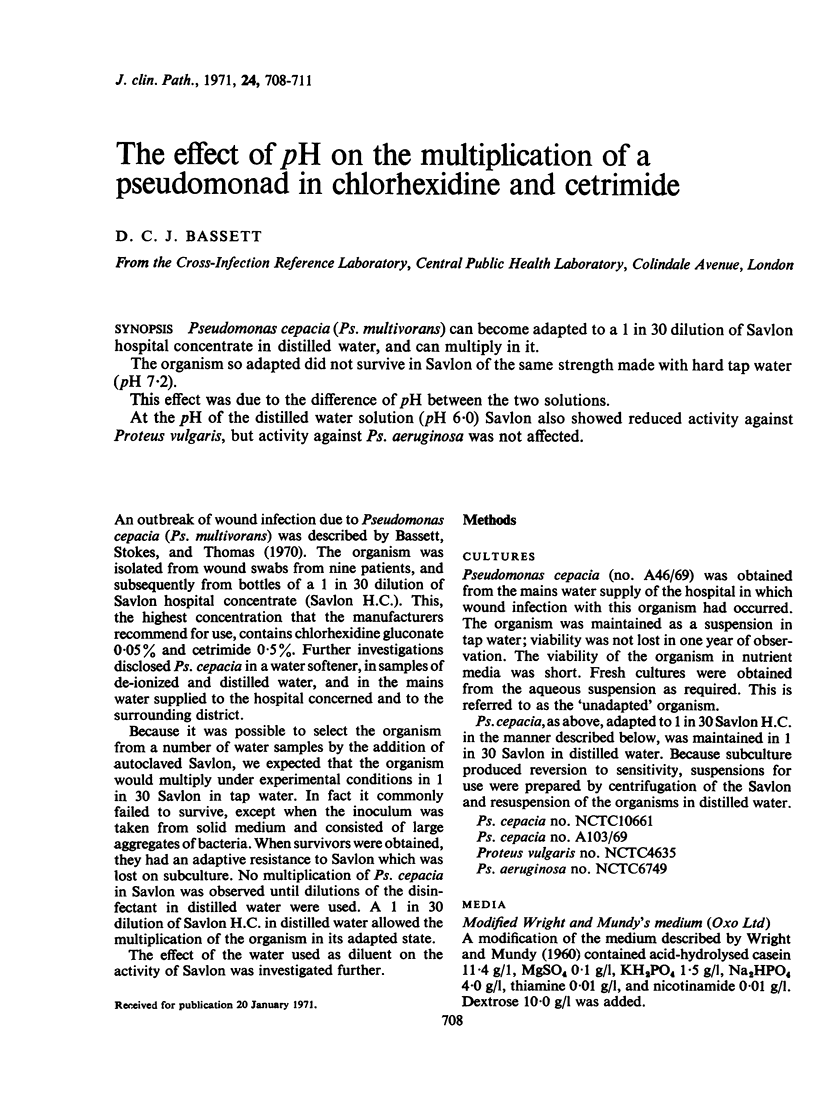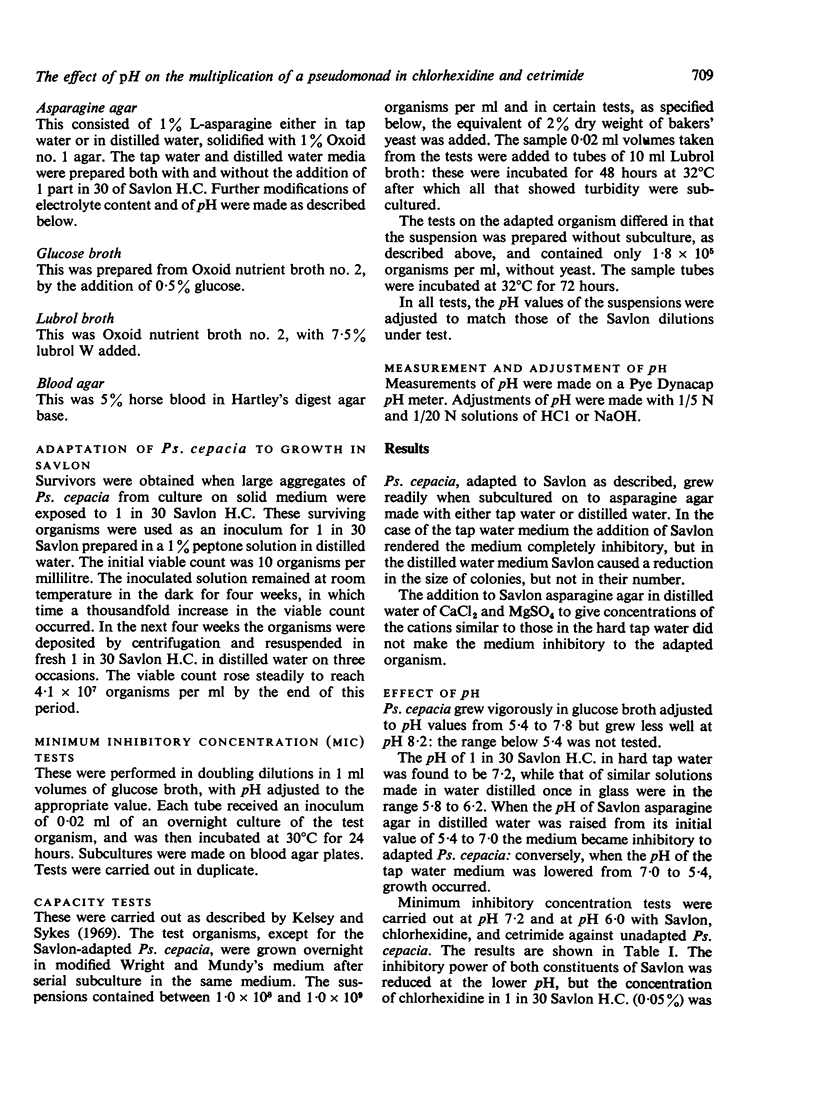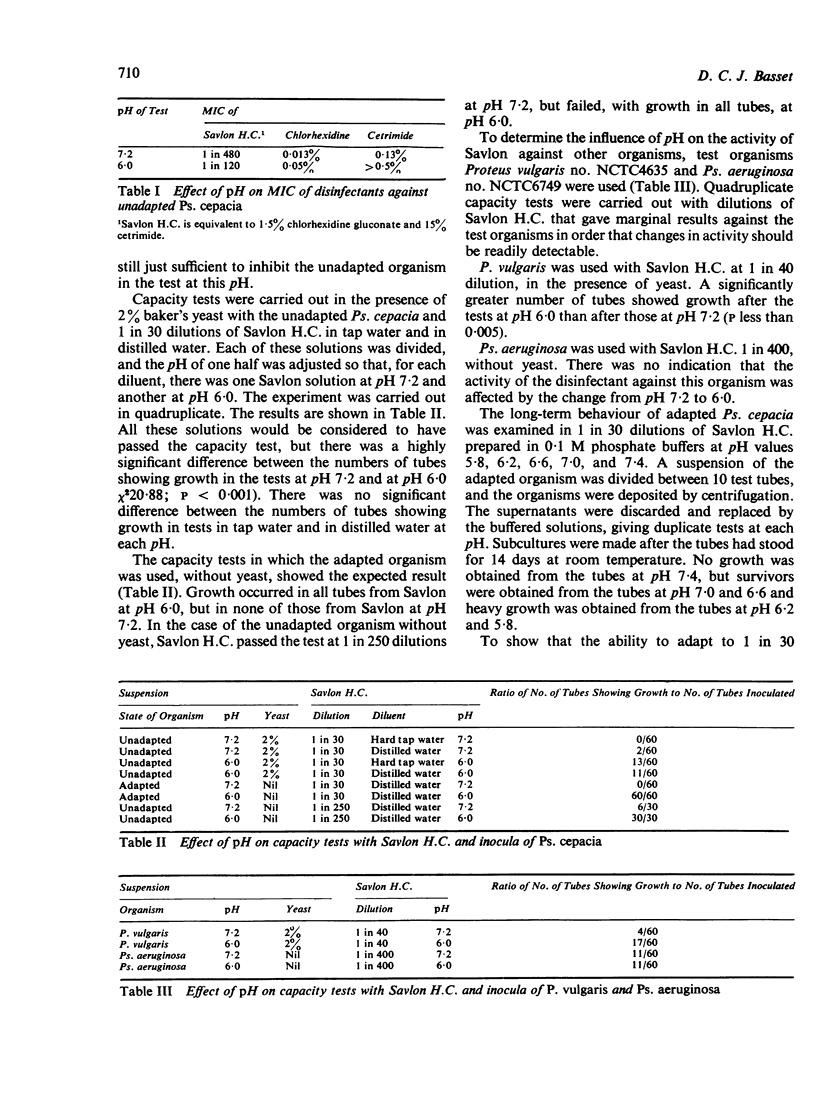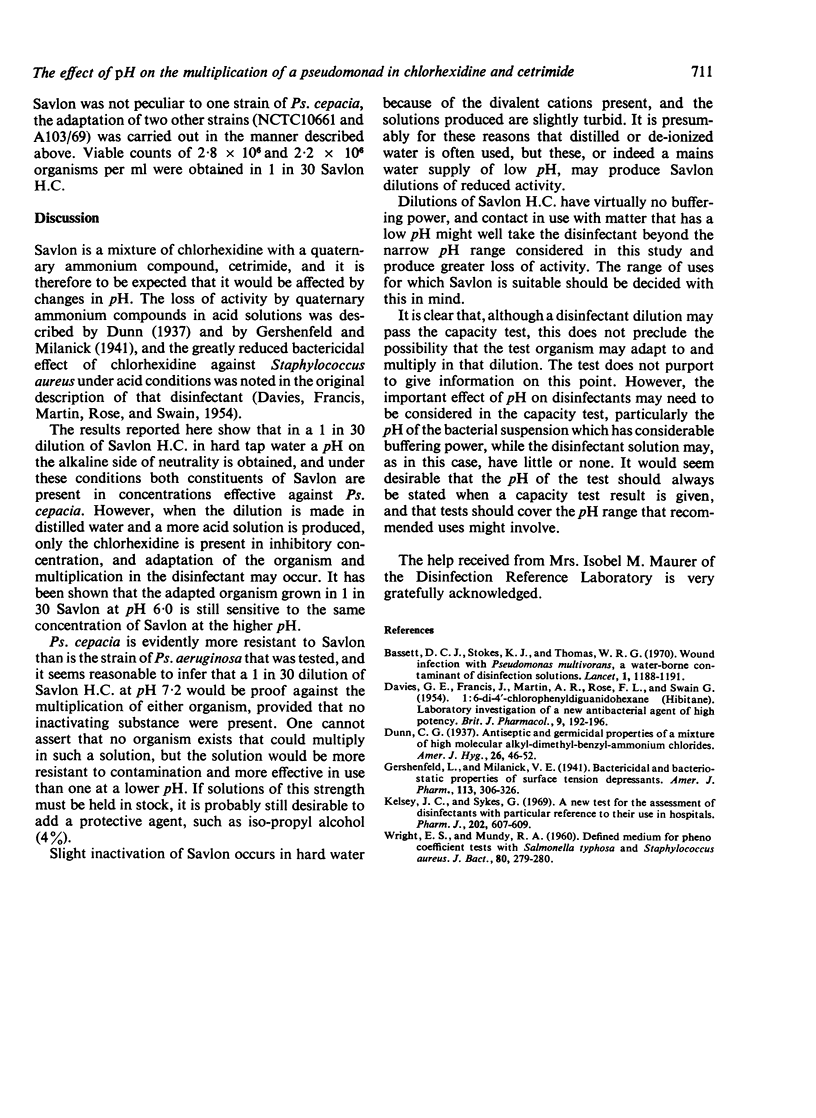Abstract
Pseudomonas cepacia (Ps. multivorans) can become adapted to a 1 in 30 dilution of Savlon hospital concentrate in distilled water, and can multiply in it.
The organism so adapted did not survive in Savlon of the same strength made with hard tap water (pH 7·2).
This effect was due to the difference of pH between the two solutions.
At the pH of the distilled water solution (pH 6·0) Savlon also showed reduced activity against Proteus vulgaris, but activity against Ps. aeruginosa was not affected.
Full text
PDF



Selected References
These references are in PubMed. This may not be the complete list of references from this article.
- Bassett D. C., Stokes K. J., Thomas W. R. Wound infection with Pseudomonas multivorans. A water-borne contaminant of disinfectant solutions. Lancet. 1970 Jun 6;1(7658):1188–1191. doi: 10.1016/s0140-6736(70)91783-6. [DOI] [PubMed] [Google Scholar]
- DAVIES G. E., FRANCIS J., MARTIN A. R., ROSE F. L., SWAIN G. 1:6-Di-4'-chlorophenyldiguanidohexane (hibitane); laboratory investigation of a new antibacterial agent of high potency. Br J Pharmacol Chemother. 1954 Jun;9(2):192–196. doi: 10.1111/j.1476-5381.1954.tb00840.x. [DOI] [PMC free article] [PubMed] [Google Scholar]
- WRIGHT E. S., MUNDY R. A. Defined medium for phenol coefficient tests with Salmonella typhosa and Staphylococcus aureus. J Bacteriol. 1960 Aug;80:279–280. doi: 10.1128/jb.80.2.279-280.1960. [DOI] [PMC free article] [PubMed] [Google Scholar]


